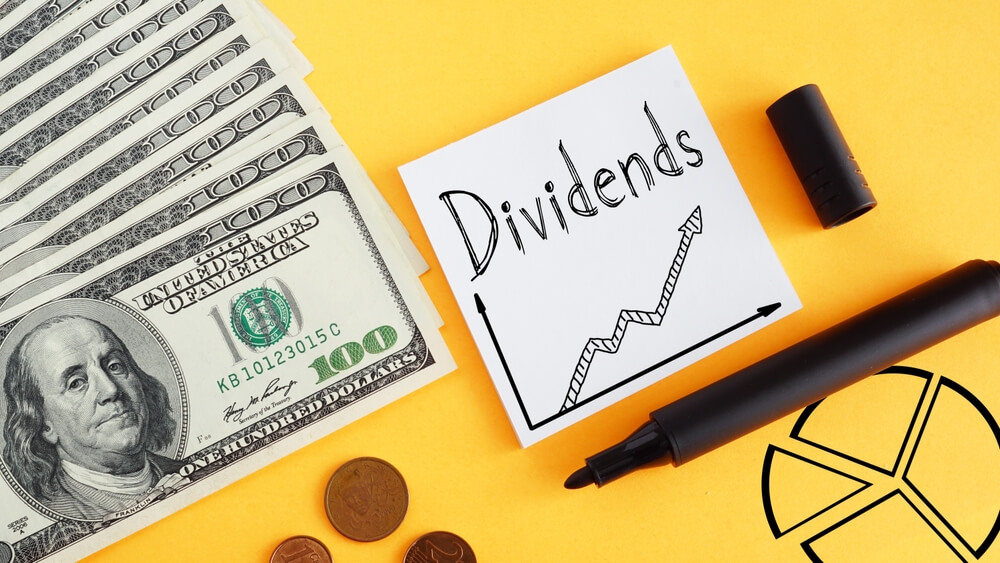
Dividend mutual funds – best funds for dividend income
Many investors frequently ask, “Does a mutual fund give dividends?” The answer lies in the plethora of high dividend mutual funds available today.
In the quest for consistent income, best dividend paying mutual funds have become a beacon for savvy investors. Among these, high dividend yield mutual funds stand out, offering a combination of capital appreciation and regular income.
The year 2023 has seen a surge in top performers, with Vanguard dividend mutual funds leading the charge in many portfolios. For those in search of monthly payouts, top monthly dividend-paying mutual funds offer an enticing proposition.
As we delve deeper into the world of highest dividend mutual funds, we aim to shed light on the best dividend mutual funds of 2023 and what they bring to the table for prospective investors.
Best mutual funds to invest in for high yield dividends
Vanguard High Dividend Yield Index Fund (VHYAX)
Assets: $49 billion
Yield: 3.1%
Performance: Down 0.4% in 2023, total return of 2.5% till July 20
Expense Ratio: 0.08%
Vanguard Dividend Appreciation Index Fund (VDADX)
Assets: $13 billion
Yield: 1.9%
Performance: Up 8% in 2023, total return of nearly 10%
Emphasis: High growth prospects and stocks like Microsoft and Apple
Expense Ratio: 0.08%
T. Rowe Price Equity Income (PRFDX)
Assets: $17 billion
Yield: 2.2%
10-year Average Return: 8.4%
Focus: Financial stocks, healthcare, and industrials
Expense Ratio: 0.67%
T. Rowe Price Dividend Growth (PRDGX)
One-Year Return: 13.4%
Composition: 90% U.S. stocks
Yield: 1.2%
10-year Return: 12.1% annually
Expense Ratio: 0.64%
Columbia Dividend Income (GSFTX)
Assets: $37 billion
Yield: 2%
Focus: Low-volatility investments with dividend growth
Top investments: Tech, energy, and consumer names
Expense Ratio: 0.64%
American Funds American Mutual Fund (AMRMX)
Assets: $91 billion
Strategy: Conservative
Yield: 1.9%
Top holdings: Microsoft, Apple, AbbVie, Comcast, General Electric
Expense Ratio: 0.58%
BlackRock Equity Dividend Fund (MADVX)
Assets: $19.5 billion
10-year Return: 9.8% annually
Yield: 1.9%
Focus: Financial services and healthcare
Expense Ratio: 0.68%
What exactly are dividends?

In short, dividends arise from shares (but not only from them). Namely, dividends are payments that a company makes to its shareholders, which represents part of its profit through regular operations.
Their primary purpose is to provide a financial reward to shareholders for their investment in the company, but also to entice them to invest in the company.
Roughly speaking, we can divide dividends in two ways. That are:
Cash dividends—Shareholders receive cash payments directly.Share dividends—Shareholders receive additional shares instead of cash.
Dividends and stocks are the basic elements of investing in the stock market, and understanding these concepts leads to maximizing potential returns and significantly wider and more diverse diversification of your portfolio.
How Do Mutual Funds Pay Dividends?
Mutual funds typically hold a variety of securities, including stocks that might pay dividends. These dividends get paid to shareholders at various times.
Some mutual funds use a dividend reinvestment plan (DRIP) to put the dividends back into the stocks, while others accumulate the dividend income and pay it out periodically, such as monthly or quarterly.
After covering expenses, a fund distributes its income. If a fund consistently earns from its dividend-paying stocks, this income can offset these expenses entirely or in part. In some places, this dividend income might even be tax-free, enhancing an investor’s total returns.
However, it’s crucial for investors to understand that companies aren’t required to pay dividends, so they’re not a sure thing.
Yet, investing in dividend-paying mutual funds can be advantageous over individual stocks. These funds pool dividend income from several stocks, offering both potential income and risk diversification, as the investment gets distributed across many companies.
Dividend mutual funds – In Conclusion
Navigating the realm of high dividend yields in the investment landscape can be daunting.
However, for those with a long-term vision seeking consistent dividend payouts and robust dividend income, the waters become clearer.
Large cap index funds, especially those that focus on dividend stocks, have become a go-to for savvy investors. Vanguard High Dividend Yield Index and Rowe Price Dividend Growth, for instance, stand out with their impressive track records.
Exchange traded funds (ETFs) are another popular choice, offering an array of stocks that pay commendable dividends over time. Whether you’re looking to invest in dividend-yielding fund giants or seeking individual dividend yield mutual funds with low expense ratios, it’s crucial to understand where each fund invests and its history of paying dividends.
After all, the goal is to invest in stocks that not only provide a return on investment but also consistently enhance your income over time. Dive into this article to uncover the best mutual funds for dividend passive income and set your sails towards a promising financial horizon.




